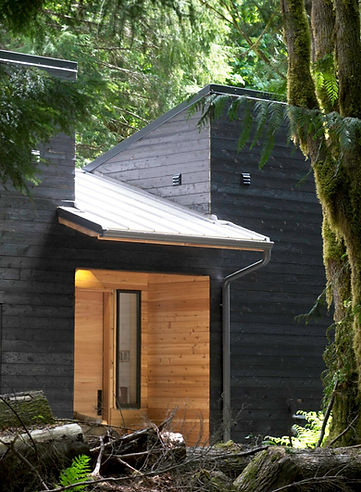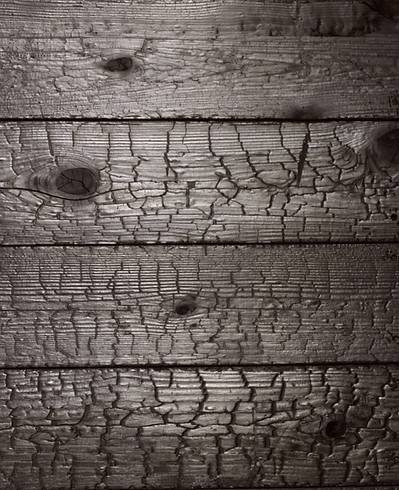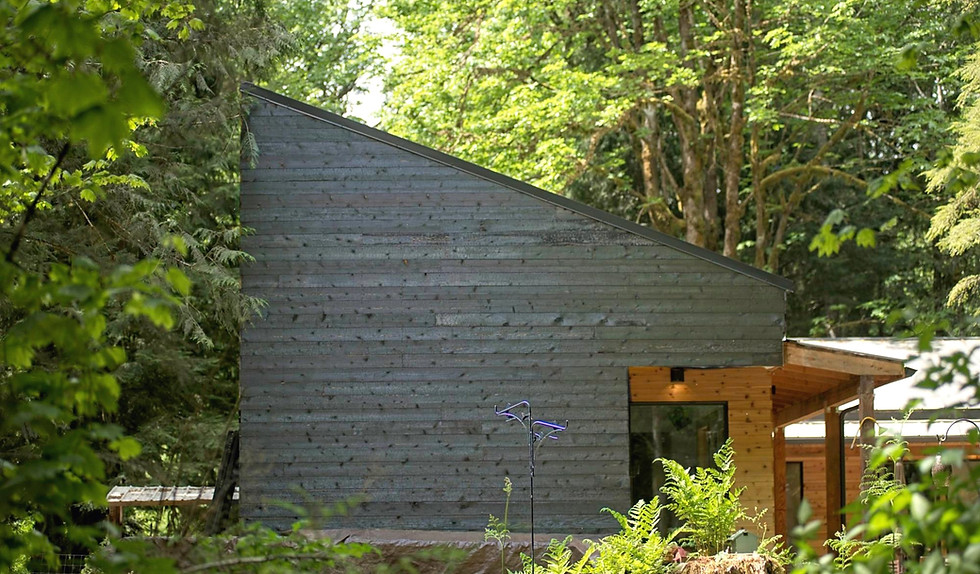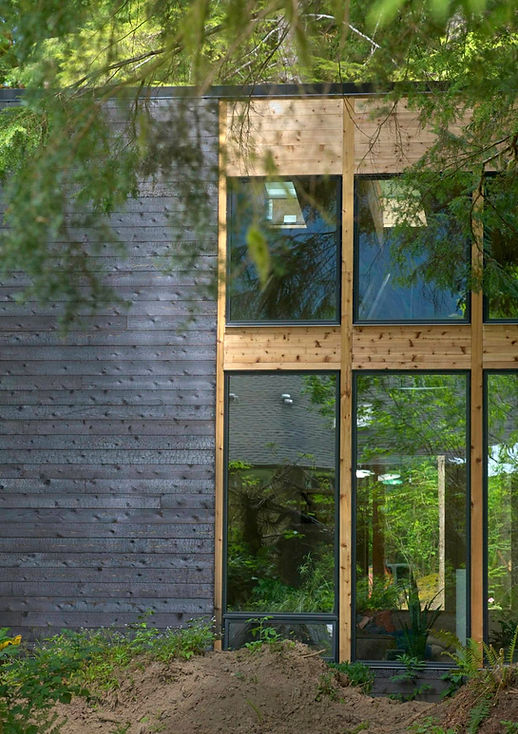
Nature holds the key to our aesthetic, intellectual, cognitive and even spiritual satisfaction. -Dr. Edward O. Wilson
Things to consider
There are many great things about using a high quality Shou Sugi Ban siding for your home. Here are some tips, tricks and opinions as you consider this step.
What is Shou Sugi Ban?
Shou Sugi Ban (also known as Yakisugi) is a traditional Japanese method of wood preservation that involves charring the surface of the wood. ). This technique was historically used with Japanese cedar (sugi) and provides a number of benefits:
-
Increased durability and resistance to rot, pests, and fire.
-
Water resistance due to the carbonized layer.
-
Aesthetic appeal, with deep black tones and unique textures.
-
Sustainable, chemical-free preservation method.
Is it cost effective?
Charred cedar siding is very cost-effective when purchased from NW Shou Sugi Ban and especially when you consider all factors and your home's life cycle costs.
When properly done, the charring process makes wood more resistant to rot, insects, and UV damage, which can

reduce maintenance over decades. It requires no frequent painting or sealing of other sidings materials. No chemical treatments, just heat.
While the upfront costs are higher than a common siding like Hardie, it is an extremely sensible option over the life of your home. Siding products like Hardie are made of concrete, one of the most carbon-intensive building materials in use today.
Why Only Use Western Red Cedar?

While their durability gives them some sustainability cred, it is not without other disqualifying characteristics.
A cost comparison:
NW Shou Sugi Ban Charred Cedar (prefinished) with 6" exposure, no regular maintenance.
$8.00/sf Natural, no painting or refinishing for life.
James Hardie Statement Collection, Prepainted Cedarmill lap siding with 7" exposure:
$3.64-4.14/sf Wood-look, made of concrete, need to paint every 5-10 years. Trimboards, and caulking add substantial additional costs and are not required in a "rainscreen" install of cedar. Very traditional.
The best part: With Shou Sugi Ban you get an authentic, beautiful, natural home that stands out from the crowd while reducing the environmental impact of your home.
-
Western Red Cedar performs extremely well and is the closest relative to the ideal properties of Japanese sugi (cedar), making it a great substitute.
-
It is local. Western Red Cedar is widely available in Western North America from sustainably managed forests. This reduces its eco-footprint due to reduced transport.
-
Natural durability: It’s naturally resistant to decay, insects, and moisture—benefits that are enhanced by the charring process.
-
Low resin content. It has less sap than other woods (like pine), which prevents issues during the burning process and helps produce a clean, consistent char.
Deep Char?
We typically supply cedar siding with what is called a deep char (or alligator skin finish). The deep burn is what creates the durability and other benefits. The deep char carbonizes the outer layer of wood, creating an inhospitable surface for insects, mold, and fungi. The thick char layer acts like a natural barrier against UV rays, rain, and temperature fluctuations. A deep char can last longer without needing any refurbishment.
Ironically, pre-charring wood makes it more fire-resistant, as the outer layer has already been burned and won’t ignite as easily again.
Deep char creates a striking, alligator-skin texture and rich, dark black appearance that many designers and homeowners seek for a dramatic effect.
Why square edge siding boards?

We recommend that the siding be installed as what is called a Rain Screen wall. That simply means that unlike Hardie or vinyl siding the cedar does not sit directly onto the housewrap or other water barrier. By installing cedar over battens a 1/2'' air space is created, allowing the backside of the cedar to breath. Using square edge siding allows the water and water vapor to escape easily (whereas a shiplap or other lap-installed products trap moisture behind and can reduce the life of the siding).
If you love a more pronounced board look and want a lapped product we recommend using our "Channel Profile". This style creates a strong layered look to the finished wall, while providing a lapped siding that breathes well.
For more on the technical recommendations go to the install page. HERE

Channel Profile Ship Lap, Deep Char
1x6 Square Edge, Deep Char

Does the charred cedar need to be sealed or oiled?
While it is common to apply a Tung oil or other natural products to the siding, we do not believe it is absolutely required. With a deep char finish the siding will weather well and maintain the rustic feel of the char, maintaining a natural patina of wood aged over time (this is traditionally the way the wood was treated.
That said, if you wish, we can prefinish the siding with an all natural dark Tung oil finish, after charring. In this decision, consider that adding "product" to the wall takes away and defeats one of the primary features of the process: low upkeep without environmental toxins.
If there are other Shou Sugi Ban finishes you are interested in, call or email us to discuss.
Exception: for interior spaces, or in high touch areas, an oil, like our Black Tung Oil finish, should be applied to help stabilize the char.
For more on the technical recommendations go to the install page. HERE
How durable is it?
Shou Sugi Ban is extremely durable—lasting 50 years or more when done properly and with the right wood. Deep char increases weather and pest resistance. The carbonized layer acts like a protective shell, resisting rot, UV, and insects.

Installation quality including proper flashing, ventilation, insect protection in the wall are essential. With the right setup, shou sugi ban siding or fencing can easily outlast conventional painted or stained wood.
How is it produced?
Cedar boards are selected for compatibility for their use and then inspected for flaws and defects. The best boards are then fed on a conveyor belt through a high temperature propane furnace to carbonize the top and side surfaces. An electric feeder assures that the boards are fed at a consistent rate, resulting in an even burn.
Is there absolute uniformity? Like any natural material there is variation and some idiosyncratic features. not all wood looks or burns the same. Part of the beauty is that the finish reflects the uniqueness material, and not a flat applied finish.
What about insects?
First, the charring process is effective at repelling most bugs. However, we recommend protecting the airspace behind the siding install with an insect barrier at the bottom of each rain screen cavity. Simply installed, products like SV-3 Rainscreen Siding Vent by CORAVENT and

other similar products prevent wasps and bees from nesting in the space created in a rain screen wall. See tech info at LINK
Why purchase from Northwest Shou Sugi Ban?
1. We are a local company, delivering locally sourced products in the Pacific Northwest.
2. We are committed to your goals and promise to deliver sustainable products at the lowest price point in the industry.
3. We do not have a minimum order size
4. We are led by an architect familiar with optimized exterior wall assemblies and are happy to help you create the perfect solution for your home.
Our experience shows that doing a good thing for the environment can be a cost effective/good thing for the pocketbook.
Have questions?